|
|
|
Sort Order |
|
|
|
Items / Page
|
|
|
|
|
|
|
| Srl | Item |
| 1 |
ID:
177143
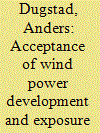

|
|
|
|
|
| Summary/Abstract |
Despite a large stated-preference (SP) literature on wind power externalities, few SP studies employ a case-control approach to examine whether people's acceptance of new wind power developments and renewable energy initiatives increases or decreases with exposure. Furthermore, the existing studies are inconclusive on this issue. In a case-control discrete choice experiment, we measure the level of acceptance in terms of people's willingness-to-accept (WTA) for having future land-based wind power developments in Norway; comparing exposed and non-exposed people's WTA. We find that exposure lowers acceptance. Furthermore, exposed people are also unwilling to pay as much to increase general domestic renewable energy production (from all sources) as non-exposed people, and thus have lower acceptance for such renewable energy policy initiatives. After testing for type of exposure, we argue that the inconclusiveness in the literature of how exposure affects acceptance of wind power developments could be due to the fact that impacts considered differ somewhat across studies.
|
|
|
|
|
|
|
|
|
|
|
|
|
|
|
|
| 2 |
ID:
144926
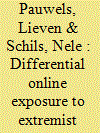

|
|
|
|
|
| Summary/Abstract |
The present study applies Social Learning (Differential Association) Theory to the explanation of political violence, focusing on exposure to extremist content through new social media (NSM) and controlling for key variables derived from rival theories. Data are gathered using (a) a paper-and-pencil study among high school students, and (b) a web survey targeting youths between 16 and 24 years old. A total of 6020 respondents form the dataset. Binary logistic regression is used to analyze the data. Results show that even when controlling for background variables, strain variables, personality characteristics, moral values, and peer influences, the statistical association between measures of extremism through NSM (ENSM) and self-reported political violence remains significant and fairly constant. The most persistent effects are found for those measures where individuals actively seek out extremist content on the Internet, as opposed to passive and accidental encounters using NSM. Furthermore, offline differential associations with racist and delinquent peers are also strongly and directly related to self-reported political violence, as are some mechanisms from rival perspectives. This indicates that political violence can only partially be explained by social learning and suggests that the impact of ENSM is mediated by real-world associations and that the offline world has to be taken into account.
|
|
|
|
|
|
|
|
|
|
|
|
|
|
|
|
| 3 |
ID:
137614
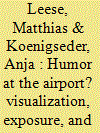

|
|
|
|
|
| Summary/Abstract |
With the emergence of aviation as a target for terrorism and serious crime in the 1970s, the affective dimension of airport security changed drastically and is now carefully engineered as a zone of earnest and solemn protocol. Against a backdrop of bombings and hijackings, airport security today enacts a “no bullshit” approach to the “war on terror.” Humor has essentially been banned from screening operations. From signs reading “No bomb jokes, please,” to drastic consequences in the case of non-compliance, security appears as something that is not to be fooled around with. Against this background, this paper builds on ethnographic fieldwork at Hamburg airport during the German trial run with body scanners in 2011. During the time of observation, we found a surprising amount of reciprocal laughter and joking. We argue that this can be conceptualized as an attempt to break open a space for laughter, momentarily abandoning protocol in order to deal with issues of visualization, exposure, and shame which arise from the new focus on the fleshly anatomical body.
|
|
|
|
|
|
|
|
|
|
|
|
|
|
|
|
| 4 |
ID:
131690
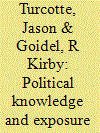

|
|
|
| 5 |
ID:
175370
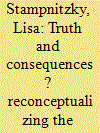

|
|
|
|
|
| Summary/Abstract |
Secrecy, especially state secrecy, has taken on increasing interest for scholars of international relations and security studies. However, even with interest in secrecy on the rise, there has been little explicit attention paid to exposure. The breaking of secrecy has generally been relegated to the role of a mere ‘switch’, whose internal workings and variations are of little consequence. This article argues that exposure is a significant process in its own right, and introduces a new conceptualization of exposure as a socially and politically constructed process, one that must be ‘thickly described’ if we are to understand how it occurs and has effects. I differentiate the process of exposure into two distinct aspects, reserving the concept of exposure to refer to releases of information, while introducing the concept of revelation to refer to a collective recognition that something has been exposed. The first part of the article explores existing understandings of secrecy and exposure to demonstrate why a new framework is needed, while the second part applies this framework to a case study of the exposure of the use of torture in the post-9/11 US ‘war on terror’.
|
|
|
|
|
|
|
|
|
|
|
|
|
|
|
|
|
|
|
|
|